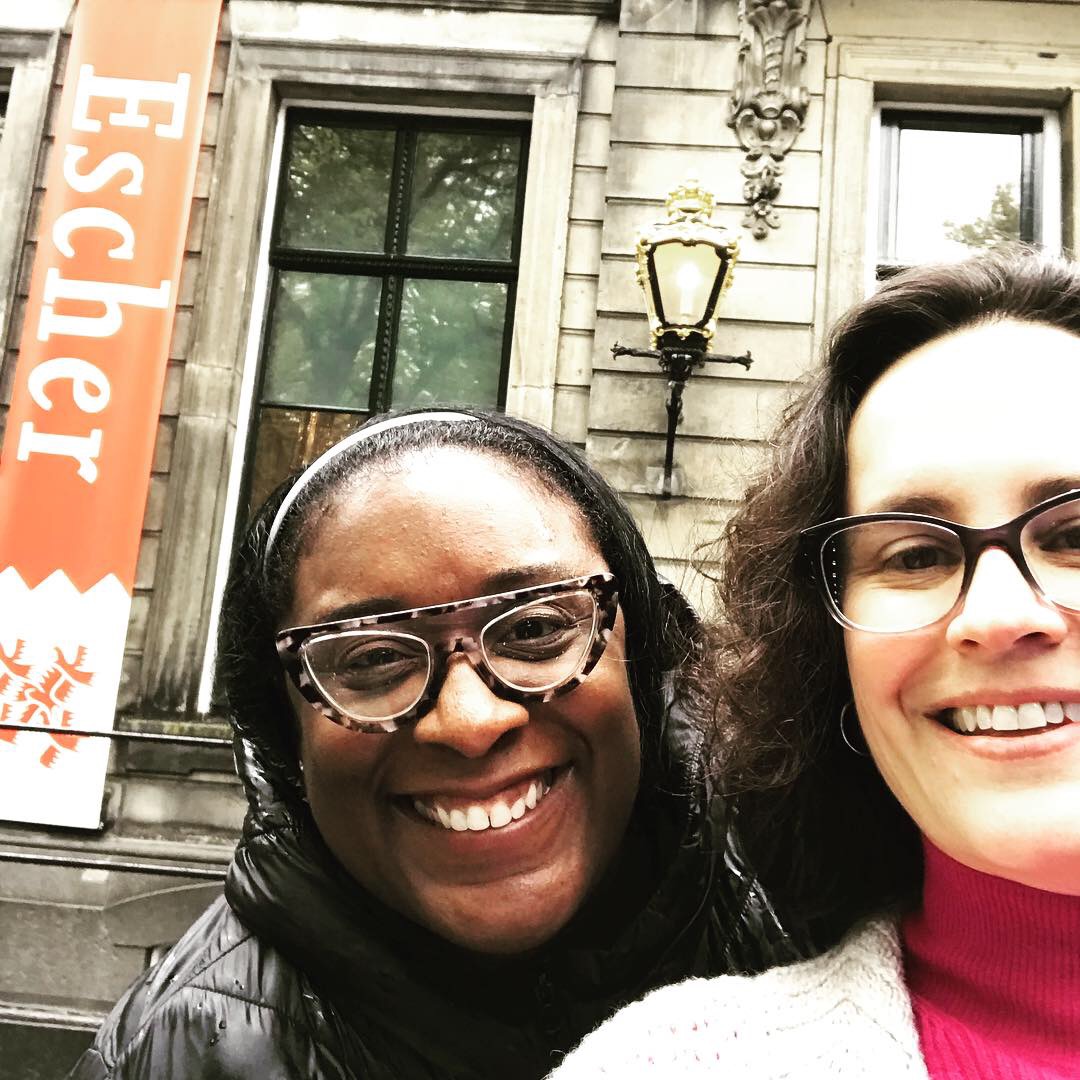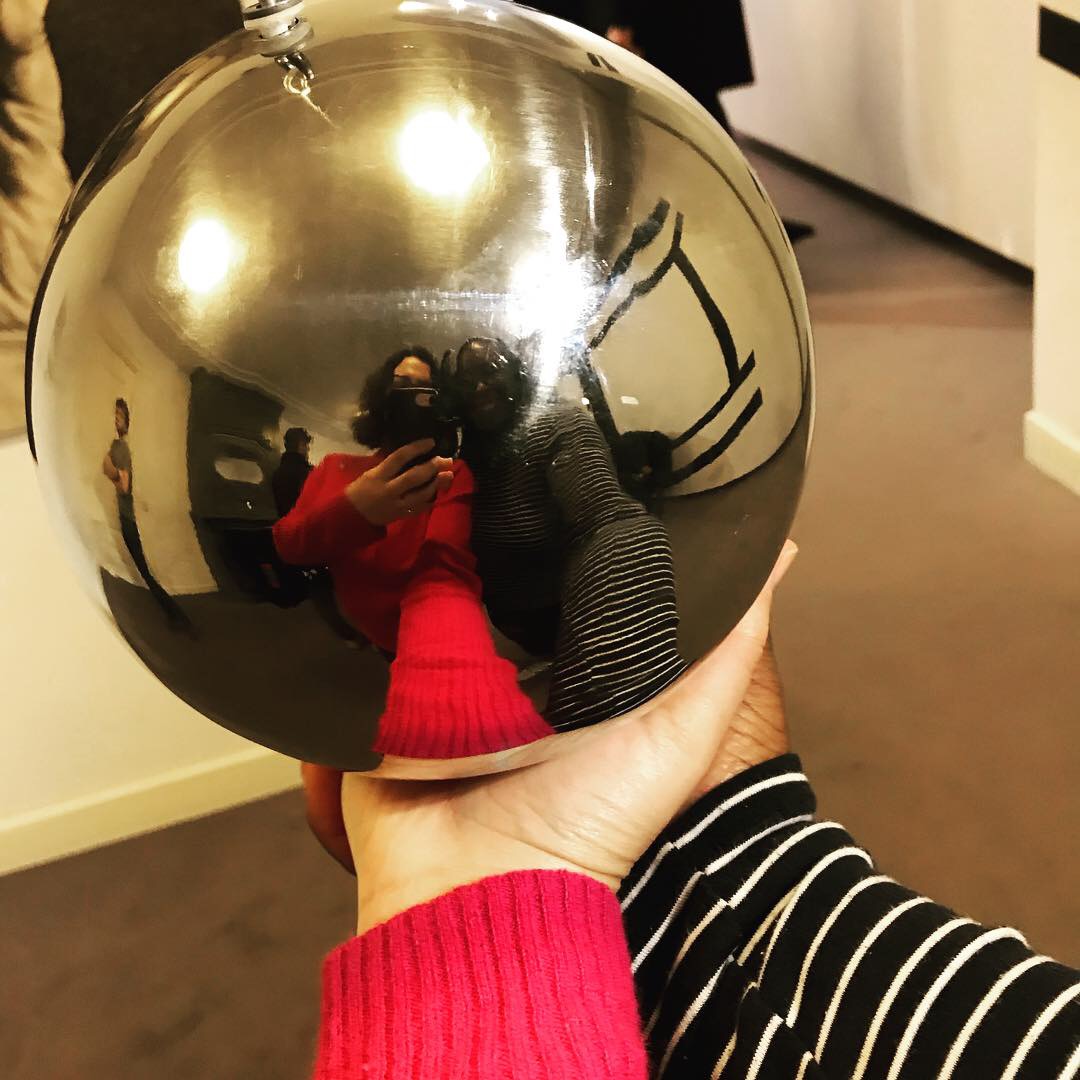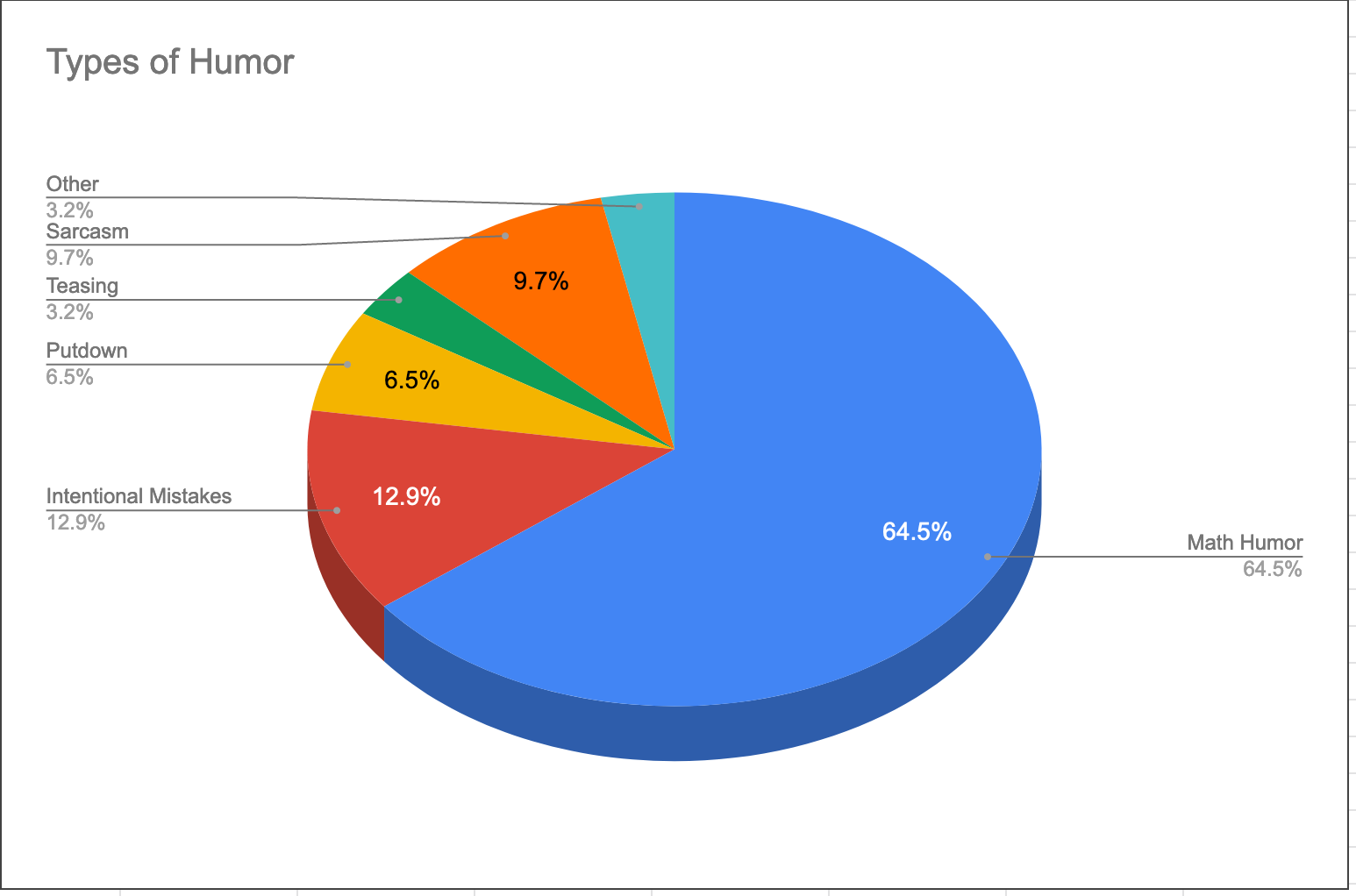Humor serves many functions in my life. Noticing the absurd. Playing with unexpected associations and enjoying the surprise. Sharing inside jokes with friends. Resisting, venting, and gaining temporary relief about abuses of power by belittling them with laughter.
I am obviously not unique in this. Humor is a crucial part of being human in a complex (and often ridiculous) world.
But humor –– especially in certain forms –– is not always welcome in school. What does this mean for students’ expressions of their humanity? Think about the well known class clown archetype. Some educators use this label with derision, assuming students step into this role for negative reasons, like avoiding work or garnering attention that distracts from lessons, making the teacher’s job harder.
The essential role of humor for many people’s ways of being in the world is thus in tension with many ways of “doing school” that require deference to the teacher’s authority. This leads to dilemmas for those of us who want to build inclusive and humanizing classrooms. We get many messages from administrators, teacher educators, and other colleagues that a good class is an orderly class, one where the teacher leads and students follow, not one where spontaneous outbursts might be embraced and incorporated, where laughter might be happening in small groups, or where a class clown can have a legitimate place in learning –– even be an important member of the community.
Personally, I knew early on I was going to struggle to navigate my own predilections with these common images of “good teaching.” During my student teaching, I accompanied a group of seventh graders on a field trip to the courthouse to observe a trial. Our guide welcomed us to the courthouse and looked at the docket to see what case we would be viewing.
“Oh, good. It’s a nice, clean trial,” she said.
“Dang!” said one student, leading me to snicker audibly.

Some nearby students turned to me in surprise: Wasn’t I supposed to scold him for his lack of decorum? Perhaps I was. But as a human, I loved his reaction for its honesty. In fact, much of my joy as an educator comes from engaging students’ clear eyed honesty, which extends to their disappointment about a “nice, clean trial.” I realized then that I would need to develop a way to enforce behavioral norms (many of which I myself find challenging to adhere to) and my genuine appreciation for his rascally reaction.
Let me be clear. I am not suggesting an “anything goes” approach to humor in schools. Educators resist humor for many reasons. Humor can be subversive. Humor can be exclusionary. And, obviously, humor can be mean. But shouldn’t we have a way of inviting some humor into our math classrooms? Can we pick and choose with a little more care?
Seeking a framework for humor in math classrooms
Recently, I have been working with my colleague, Dr. Nicole Joseph, and an undergraduate research assistant, Yasmin Aguillon, to look at humor in math classrooms.
Dr. J and I are working on this together for a few reasons. We share a commitment to welcoming students’ full humanity into the math classroom and seek to help teachers understand what that entails. In one of her recent articles, she and her colleagues heard from Black girls that they wanted math classes to be a place to be their full selves, including the silly and “goofy” (an adjective one of the participants used). We also share that our ways of being in the world do not require us to put our own silliness in a box when we are doing work. We can sing, tell jokes, code switch –– play –– while we are working on things we deeply care about. This, in our lived experience, is not at odds with deep and rigorous work. In fact, bringing our authentic selves to our work only enhances its depth and rigor.


Dr. Nicole Joseph and me, clowning with math at the Escher Museum
To build our framework, we draw on several sources. First, we have looked at research on humor in social life, especially classrooms. Second, we have looked at classroom level data from my recent research project where students are clowning around. Finally, we conducted a completely unscientific #MTBoS #iteachmath twitter poll on whether math teachers felt humor had a place in the classroom.
We are working on a fuller discussion of humor in math class, but for the purposes of this blog post, I want to suggest the following:
The playful –– and even the subversive –– aspects of humor belong in math class, not only because they allow students to more fully be themselves, but because they embody important mathematical habits of mind and allow entrée for students’ broader identities. At the same time, we recognize that inviting humor may require teachers to develop new forms of teaching and cultural competence.
Playful and subversive humor belongs in math class
If you think about the pleasurable aha! of mathematics, you might notice its similarity to the pleasurable moment of getting a joke. The common experience is that of insight.
Mathematics has its share of jokers. Aside from famous people like Lewis Carroll who enjoyed playing with logic, we have mathematical entities that upend the order of things. Infinity and zero subversively violate our expectations of how operations and functions work: what do you mean we can’t divide by zero? why do functions change when we imagine taking them to infinity? The whole field of topology essentially invites us to imagine that objects as made of rubber, making a coffee mug “the same” as a donut. These delights of insight and absurdity tickle any good rascal.

When we invite humor into math class, we also change the emotional tenor of what we are doing. Humor positively effects learning by releasing tension. When we laugh, we are at often more at ease. Humor has even been shown to improve students’ performance on tests. Maybe laughing sessions can improve study sessions. Humor can build rapport, either with individual students or with a classroom community. I know a teacher who strategically looks for something to laugh at with each of his classes, so that they can have a shared inside joke.
Humor also invites students’ broader identities into their learning. Who we are is fundamental to how we make sense of the world; when we have to leave part of our selves at the door in order to be seen as “acceptable,” we abandon crucial sensemaking resources. Although laughing at my student’s response to the “nice, clean” court case may have not followed a proper teacher script, it appreciated him for the twelve year old boy that he was and his understandable wish for a meatier, dirtier case. In sanitizing the world for children, often in the name of protection, we omit important details. By the time they are twelve, they have often started to question who is actually protected through adult judgments of “appropriateness.” This kind of questioning signals curiosity and intelligence.
Why wouldn’t we welcome such attitudes in school?
Teachers may need new forms of teaching competence to productively support humor in class
Indeed, in our completely unscientific twitter poll of 741 people on the Internet, 94% of respondents agreed with our idea that humor belongs in math class. Among the 31 respondents who elaborated on their reasoning, we found that most people (64.5%) referred to math humor, like math puns and math jokes. The next most mentioned form of humor were intentional mistakes (12.9%), a pedagogical strategy where teachers present an incorrect solution and humorously play at not understanding to prompt student explanations. Most of the remaining responses referred to negative forms of humor such as sarcasm (9.7%), put downs (6.5%), or teasing (3.2%).

What is interesting about these responses, as limited as they might be because of the nature of the poll, is that the positive examples of humor are teacher-centered; that is, they are controlled by the teachers’ choices about curriculum and pedagogy. The negative examples signal adverse relationships, whether from students to the teacher, teacher to students, or among students themselves. But, in the examples offered, we do not see examples of how students themselves can be a positive source of classroom humor.
We suspect this is because student-derived humor is trickier teaching terrain. (Or it may be due to the limitations of our completely unscientific Twitter poll.)
Building off of the first interpretation, we acknowledge that there are many shades of gray when we laugh with students. How do we navigate the ideas of “appropriate” that can vary so much within a classroom, let alone a broader school community?
Once we open the door to students’ humor, how do we ensure that positive humor does not cross over into the exclusionary humor that can lead to hurt feelings and negative social dynamics?
How do we feel if students are laughing at us? Or even if we are not the target, how do we feel if they are sharing a joke that, for reasons of generational, linguistic, or cultural differences, we don’t get? What would it mean for us, as teachers, if we are on the outside of the humor?
We suspect that productively managing humor requires a unique form of teaching competence. As the outsider example suggests, this also includes forms of cultural competence.
We are just starting to figure out how to name and describe what these teaching competencies might look like, using the classroom data examples. From our initial look, we think humor competence for teaching involves a form of self-knowledge –– knowing yourself, being comfortable with your own identities, having the humility to laugh at yourself. But it also involves relational skills of reading students’ reactions, developing rapport to invite open communication, and having strategies for repairing relationships when lines get crossed or feelings hurt.
We would love to hear more about how you use humor in math class to make it a more humanizing space. Math class could use a few more laughs.
This post was written as a part of The Virtual Conference on Humanizing Mathematics (#VConHM on Twitter)
This is really interesting. Some thoughts: Many of the currently popular protocols allow for student humor — Which One Doesn’t Belong?, for example, has room for fun and seemingly irrelevant answers, allowing the “class clown” to both be themselves and participate productively. Notice and Wonder also allows for a lot of leeway.
A couple of years ago, when introducing rational exponents, I asked “Give me a wrong answer to this problem: 9^(1/2)” The first student to answer said, “Purple.” On it’s face, it’s a wise-crack, but it’s kind of funny, brought that student into the conversation in a way that I could take seriously. “Why is purple wrong?” “Because the answer is a number.” Which sent us on our way.
When I’m making a Desmos activity where I’m going to have students draw things that might be projected to the class, I try to anticipate where they might be tempted to be silly. For example, if the question is to sketch a path that is the minimum distance connecting three points, I’ll first have a slide that says, “Draw any path connecting the points.” This allows students to be silly and ridiculous if they feel the need. We can laugh, and then move to the next slide which says, “Draw the path of minimum length.” (I don’t tell them that I’m doing this, of course.)
Once students are given the latitude to be themselves, even if that’s in a clownish kind of way, it’s easier to bring them into doing the thinking I’d like them to do. The more I resist and try to suppress them, the more of their effort and focus goes toward resistance of that suppression.
But you are correct: this is tricky teaching terrain.
LikeLiked by 2 people
I love the idea of saying, “Wrong Answers Only,” as an invitation to be silly and at the same time a way to narrow in on the “what” of a process.
LikeLike
Pingback: Dr. Rochelle Gutiérrez – Hema Khodai – Mathematician
I’m glad to hear I’m not the only one trying to introduce humour into the math classroom. I’ve found it challenging, as I’m not particularly outgoing, but I think it is worth the effort.
I have found that students will be more likely to engage with the lesson if I can manage to intertwine some humour.
You mention that it can be difficult if you are being laughed at and I agree it is. However, I think it is worth the risk. Especially as you get better at it, because it is a skill. I haven’t gotten to the point of programming or planning for laughter, but I think that would be a good next step. Thank you for the article!
Matt Kiss
LikeLike
I love using humor and as long as the students realize you are trying. I think they respect your trying. But I do agree the appropriate is a very thin line to balance on. “How do we navigate the ideas of “appropriate” that can vary so much within a classroom, let alone a broader school community?”
LikeLike